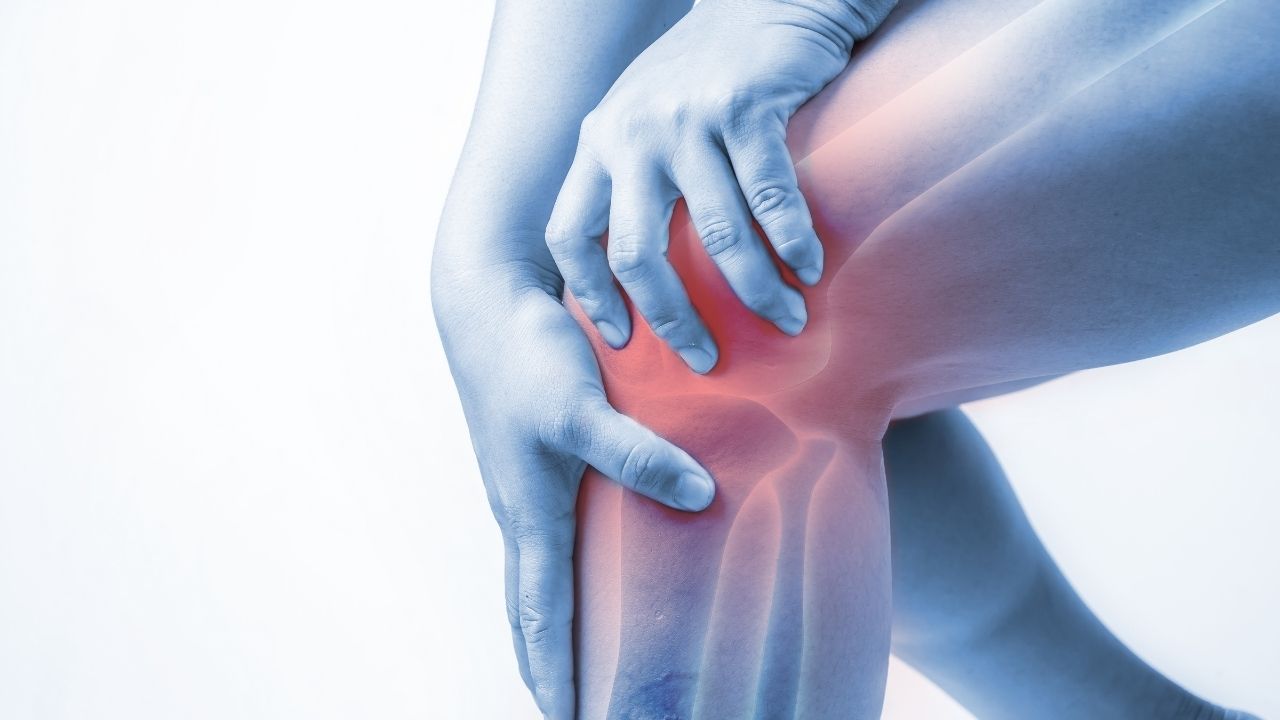Health
Experiencing Knee Pain? Possible Treatments Options You Ought to Know About

Have you ever experienced knee pain? The pain and discomfort are unbearable. The bone structure causes knee pain by either compromising the knee joint, knee cap, cartilage, or ligaments. The pain to the knee can be from an aggravating activity or foot injury. Knee pain is treated in various ways. However, you need an orthopedic specialist to check on the severity of the pain. The best Jersey City orthopedics are at Garden State Pain Control. Their team is equipped with top-notch professionals to assist you in your recovery journey.
Physical Therapy
Your doctor may recommend physical therapy as a treatment option. The therapy helps in improving the strength of the muscles and making the knee more stable. However, the therapy exercise technique needs to be monitored by a physical therapist to avoid further worsening the injury. If you are a sports person, you may be required to exercise using the correct pattern movement to minimize injury to the knees.
Medications
Depending on the severity of the knee problem, your doctor may suggest some medication to aid in your treatment. The medication is normally prescribed to relieve pain or treat an underlying condition causing the pain. Over-the-counter medicine such as naproxen sodium (Aleve) and ibuprofen may assist in easing the pain but only through prescription by a specialist. Creams also come in handy in protecting the pain due to their numbing effect.
Injections
This is also a viable treatment option your doctor may suggest. In some instances, injecting medication directly into the joint may help to reduce pain. Severe cases require this type of treatment. Below are some of the injections:
- Corticosteroids:
Injection with corticosteroid drug is administered to the knee to ease inflammation, pain, and swelling. The drug takes two to three days to begin to work.
- Platelet-rich plasma (PRP):
This injection is made of your own blood plasma with a high concentration of platelets. The platelets are injected into the knee to induce healing of injury or damaged cartilage.
- Viscosupplementation:
This injection contains hyaluronic acid injected into the knee to increase mobility and reduce knee pain.
Injections are most common for patients with osteoarthritis and sometimes severe cases of knee pain.
Surgery
Surgery is also another treatment option, but in this case, one should exercise reasonable caution. You will need to weigh the advantages and disadvantages of having a surgical procedure before having one. A surgical option should be a decision of last resort. Some of the surgical options include
- Arthroscopic surgery
- Partial knee replacement surgery
- Total knee replacement
- Osteotomy
Minor surgical procedures like arthroscopic and partial knee replacement may heal quickly compared to the other two that can take a significant amount of time to heal. Total knee replacement can involve artificial joints made of high-grade plastics, polymers, and metal alloys.
Talk to a Knee Specialist Today
Knee pain is very uncomfortable and disrupts your movement. Some home remedies like elevation, rest, ice, compression, and applying a heat pack can help relieve knee pain. In severe cases, it is advisable to visit an orthopedic specialist near you to advise you on treatment options.
If you are experiencing knee pain and reside in Jersey City, visit Garden State Pain Control for your treatment. They are specialists in all kinds of pain ranging from hip pain, joint pain, neck pain, chronic pain, and leg pain. Contact them today and book an appointment.
Health
Addressing Common Myths About Vitamins and Supplements by Amanda Tirado

The wellness industry is filled with advice about vitamins and supplements, but not all of it is accurate. Many people rely on supplements for better health, but misunderstandings about how they work can lead to wasted money or even potential harm. Amanda Lorena Tirado, founder of Xmy, is passionate about educating people on making smarter supplement choices. Her company focuses on high-quality, effective products while also giving back to the community through charitable initiatives. Let’s break down some of the most common myths about vitamins and supplements so you can make informed decisions.
One of the biggest myths is that all supplements work the same way, regardless of how they are taken. Many don’t realize that traditional pills and capsules have to pass through the digestive system, where stomach acid and enzymes break them down. This can significantly reduce the amount of nutrients your body actually absorbs.
In contrast, oral strips and liquid supplements enter the bloodstream more quickly, making them more effective. For example, vitamin B12 is often poorly absorbed in pill form but is much more bioavailable in liquid or sublingual forms. Choosing the right delivery method is just as important as picking the right supplement.
Another misconception is that supplements can replace a healthy diet. Many people assume taking a daily multivitamin covers all their nutritional needs, but that’s not how the body works. Supplements are designed to support a good diet, not replace it. Whole foods provide more than just vitamins, they contain fiber, antioxidants, and other compounds that work together to benefit your health.
For example, an orange does not just offer vitamin C. It also provides fiber, flavonoids, and other nutrients that enhance absorption and support overall health. Research has shown that people who get their nutrients from food rather than supplements tend to have better long-term health outcomes. So while supplements can help fill gaps in your diet, they should not be your primary source of nutrients.
Many people also assume that if a supplement is labeled as “natural,” it must be better and safer. But that’s not necessarily true. The term “natural” is often used as a marketing tool rather than an indicator of quality or safety.
Some natural ingredients can be harmful, especially in high doses or when mixed with certain medications. On the flip side, some synthetic nutrients are actually more stable and easier for the body to absorb. The key is to choose well-researched, high-quality supplements from reputable brands rather than relying on misleading labels.
Another dangerous myth is that taking more vitamins means better health. Some believe that if a little is good, a lot must be even better, but that’s not always the case.
Certain vitamins, especially fat-soluble ones like A, D, E, and K, can build up in the body and become toxic if taken in excessive amounts. Too much vitamin A, for example, can lead to liver damage, while excessive vitamin D can cause kidney problems. Even water-soluble vitamins like B-complex and C can cause side effects in very high doses, such as nerve issues or stomach discomfort. Moderation is key when it comes to supplementation.
At Xmy, the focus is not just on convenience, it’s about real impact. The company is committed to producing supplements that prioritize effectiveness and bioavailability. But their mission goes beyond selling products.
Misinformation about supplements is everywhere, but being informed is the best way to make smarter health choices. The way a supplement is absorbed matters as much as what’s in it. A balanced diet is still the foundation of good health, and more vitamins don’t always mean better results.
Xmy is changing the way people think about supplements. Amanda and her team believe that good health is not just about what you take, it’s about making informed choices and supporting brands that genuinely care. Choosing the right supplements means choosing a brand that stands for something bigger. With Xmy, you are not just improving your health, you are supporting a company that is making a real difference.
-

 Tech5 years ago
Tech5 years agoEffuel Reviews (2021) – Effuel ECO OBD2 Saves Fuel, and Reduce Gas Cost? Effuel Customer Reviews
-

 Tech6 years ago
Tech6 years agoBosch Power Tools India Launches ‘Cordless Matlab Bosch’ Campaign to Demonstrate the Power of Cordless
-

 Lifestyle6 years ago
Lifestyle6 years agoCatholic Cases App brings Church’s Moral Teachings to Androids and iPhones
-

 Lifestyle5 years ago
Lifestyle5 years agoEast Side Hype x Billionaire Boys Club. Hottest New Streetwear Releases in Utah.
-

 Tech7 years ago
Tech7 years agoCloud Buyers & Investors to Profit in the Future
-

 Lifestyle5 years ago
Lifestyle5 years agoThe Midas of Cosmetic Dermatology: Dr. Simon Ourian
-

 Health7 years ago
Health7 years agoCBDistillery Review: Is it a scam?
-

 Entertainment6 years ago
Entertainment6 years agoAvengers Endgame now Available on 123Movies for Download & Streaming for Free
